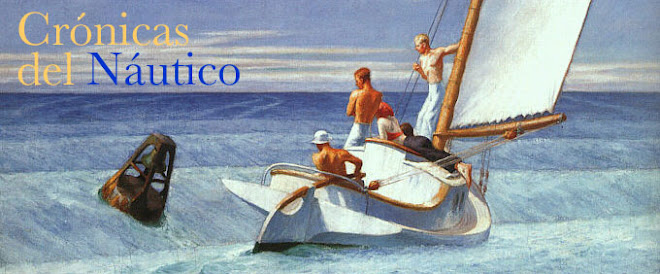Nuestro amigo De Lucchi, incansable y certero Master, nos manda un recordatorio de Blackburn. Tomo nota, y lo traslado al cuaderno.
"So let me take you through a few of the key areas that need updating or that I have learnt more about since the book was published, in my list of 10 Things You Must Do for Your Sailing Fitness!
1. Be Adaptable. Set a general training plan, then adapt it constantly. Books on training for sport say to set a periodized training plan a few months or even a whole year in advance, then follow it. However, more and more now in Sailing and other sports , that’s just not good enough to get the best out of yourself at each and every session. And it’s particularly true of Sailing where wind strength has such a big impact on the physical intensity of training.
Sometimes, you might want to do a hard session, but the wind isn’t there - to compensate, you can add on a little fitness work post-sailing or do another gym session the next morning. Sometimes, you turn up to training in not-so-good condition (eg, lingering fatigue), so then you might reduce the volume and/or intensity of the session.
Have a good idea of what you want to achieve today and this week, check the weather forecast and be prepared to modify your Sailing training plans as needed.
2. Recover Well. Use ice and cold water recovery practices. Remember that you don’t get fitter from training until you get a chance to rest and let the body rebound. You can recover faster for your next training session using recovery strategies like via cold water immersion.
Some people recommend making the bath really cold - 12-15 deg C (54-59 F), but I like it straight out of the tap (about 18 deg C/64 F). I sit in the half-full bath, cooling my back and legs, for 5-8 mins. That usually has me shivering so it feels like it’s enough. While getting in is hard, afterwards you really feel a difference by way of reduced soreness and faster recovery. Here’s how a runner does it.
3. Develop Your Back. Take particular care of your back. Sailors suffer injuries to their backs more than any other part of the body. Try to include exercises for your lower back and deep abdominal muscles everyday. There are specific exercises in my book and here is a video series of lower back exercisesand here is a good series of abdominal exercises .
4. Have Stable Shoulders. Take particular care of your shoulders. After backs, shoulders are sailors’ next most injured body part. Sailing often requires sudden, strong movements of the arms over a large range of motion and these can trouble the shoulder joints. Serious sailors should include shoulderstabilization exercise
5. Hip Flexors. Alongside working on your abdominal muscles, work on your hip flexors. Most of the time when you’re Sailing, the hip flexors are in a shortened position so you need to correct that at the end of the day with some stretches . Hip flexor stretches can help improve your posture, help the muscles recover and participate in reducing lower back issues.
6. Equipment. Think of ways your equipment can help enhance your Sailing endurance. The obvious item are battened hiking pants which spread the load and improve blood flow. Also consider whether your grip on the boat is good enough (gloves, boots, wetsuit). I glue pieces of rubber on my hiking pants where they touch the gunwale to improve grip and make it more efficient when I try to throw the boat around.
Make sure your ankles and body are well supported (boots and trapeze harness) and lastly, try to keep your muscles cool rather than hot when racing as overly hot muscles are less efficient.
7. Whey Protein. If you need to gain weight, supplement your diet with commercial whey protein powders combined with a quality size-building weight training program (it won’t work by itself). Here’s some more info on whey protein by a good company that sells the stuff. There’s weight training information for Sailing in my book.
8. Be Scientific. Keep quality records of your fitness. The aim here is to find out what works through trial and error (hopefully not so much error). Body weight is the first thing you should keep track of over the long term. After that, think of tests you can apply to yourself to measure your fitness for Sailing. (You might start with the home fitness tests in my book (but don’t do the wall sit - it can hurt the knees).
I have a master spreadsheet with 10 years of my results from time trials in cycling, rowing machine, pool running, and even surf ski paddling. It’s great to be able to look back and see the improvements.
9. Hike. Use a Swiss ball as a hiking bench to train the legs when the wind is light. If you should have done some hiking but there wasn’t enough wind, Swiss ball leg extensions can be a great substitute. Try 15-20 reps, rest for 5 sec, then do 15-20 reps and continue through to 100 reps in total.
10. Better Technique. Hike at 90% effort, rather than trying to sustain a more intense position that compromises your ability to steer, trim and decide tactics and strategy. You may not get as much righting moment, but you will gain more by trimming the boat accurately and being in a better mental state to decide which way to go. However, do go flat-out off the start.
- Good sailing, Michael Blackburn"


